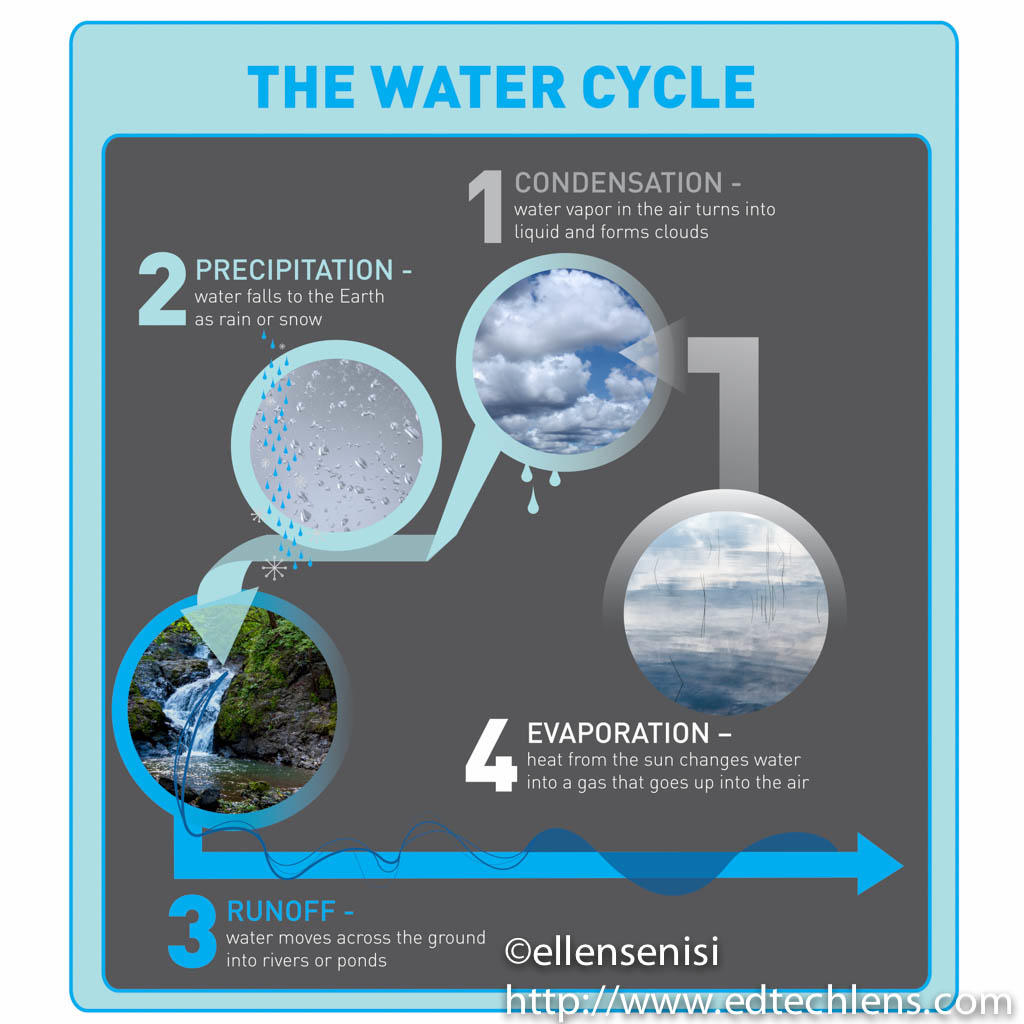The water cycle happens faster along the equator due to the intense sunlight. Here’s how it goes.
1) When hot air meets cold air condensation occurs. The condensation turns into water vapor. Water vapor turns into droplets. These droplets get clumped together and form clouds.
2) Precipitation happens when the clouds get too heavy to hold anymore droplets. These droplets fall to the ground in the for of rain or snow. Rain and snow are both forms of precipitation. Temperate rainforests get snow. Yes it’s true, it can snow in a rainforest!
3) Water that does not seep into the ground or evaporate is called runoff. The water moves across the earth and goes into rivers or ponds.
4) Lastly, the sun heats up the rain that falls to the forest floor. The heat from the sun changes the water into a gas that rises up into the air. This is called evaporation. After evaporation the cycle continues. Without the sun there would be no water cycle.
Here is what it looks like drawn out!
1) When hot air meets cold air condensation occurs. The condensation turns into water vapor. Water vapor turns into droplets. These droplets get clumped together and form clouds.
2) Precipitation happens when the clouds get too heavy to hold anymore droplets. These droplets fall to the ground in the for of rain or snow. Rain and snow are both forms of precipitation. Temperate rainforests get snow. Yes it’s true, it can snow in a rainforest!
3) Water that does not seep into the ground or evaporate is called runoff. The water moves across the earth and goes into rivers or ponds.
4) Lastly, the sun heats up the rain that falls to the forest floor. The heat from the sun changes the water into a gas that rises up into the air. This is called evaporation. After evaporation the cycle continues. Without the sun there would be no water cycle.
Here is what it looks like drawn out!

Where does the water go when it rains by you? Does it stay in one area, or does it travel to many places? Does the water cycle in your area happen as frequently as it does in the rainforest?
ETL Rainforest Science curriculum connection- Unit 1- Chapter 2- Lesson 1 All Grades/ Unit 1- Chapter 2- Lesson 2 All Grades

